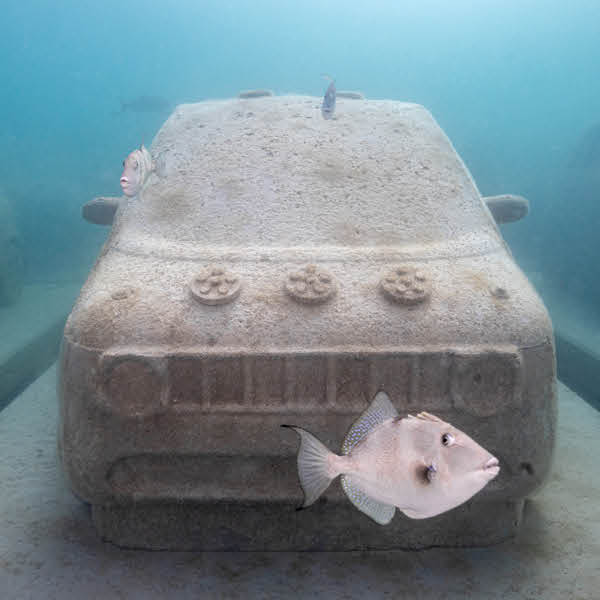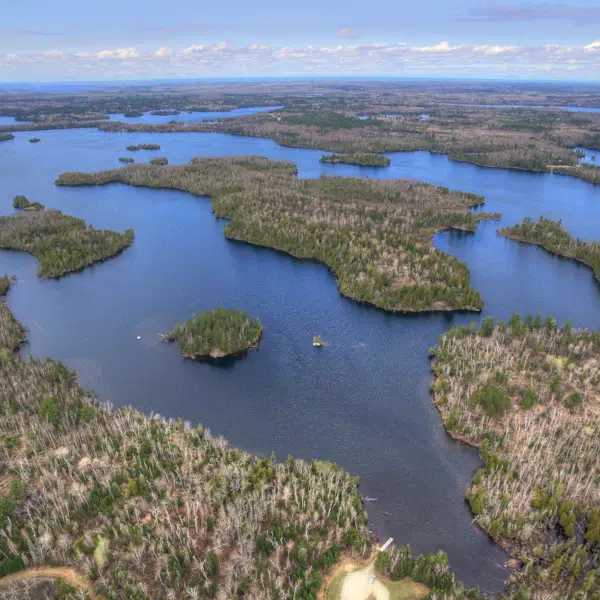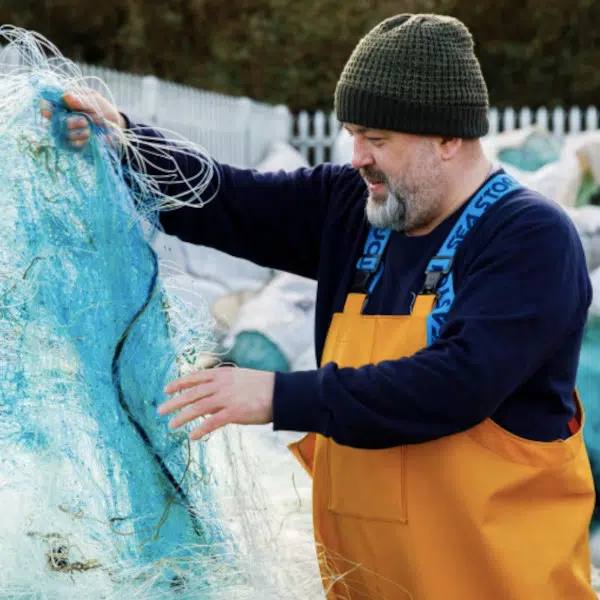
Josie George's temperature scarf as of September 4, 2020.
When artist and author Josie George started knitting her temperature scarf in January, she could not have imagined how this calendar year would unfold. The year 2020 has been unpredictable in many ways—from the emergence of a global pandemic to the social unrest and protests around the world to the wildfires ravaging Australia and then the United States. Despite everything else going on, George initially began her knitting project as a way to engage with the effects of climate change. She discovered her experience of weather patterns often paralleled her own life and emotions. As an author and artist, George's many projects center around awareness of her surrounding environment.
The artist now spends each day knitting two rows in color-coded yarn to record the temperature and the weather in her hometown in England. She's chosen a variety of warm and cool shades to depict the full spectrum of the English climate. Some months are more uniform, as seen in the chilly blues and grays of January and February. Other months set records as unusually warm and dry. This blend, gradience, and jarring juxtaposition of colors is visually arresting within the length and beautiful chevron pattern of the temperature scarf. The project has even inspired others to merge art and weather in the form of temperature scarves and blankets of their own. George hopes that her project will encourage a deeper contemplation of climate change.
As a means of updating her followers, George often adds commentary on Twitter about her scarf and the local weather, pairing it all with insight into her life with a life-long chronic illness. Deep contemplation is a theme throughout her creative practices—knitting, photography, and writing. In her June 4 temperature scarf update, George tweeted about a swelteringly hot May and her concurrent thoughts. She wrote, “For me, a month of deep grief and deeper resolve, side by side, as I looked unflinchingly at the world's damage. I read and spoke words of hope and change as I knit. I continued. I committed. I began again.” Those who enjoy the beauty and reflection of George's temperature scarf project will find these same themes reflected in her essays on diverse topics.
We had the chance to speak with Josie George about her temperature scarf project, her creative philosophies, and her upcoming memoir A Still Life (out in the UK with Bloomsbury on February 18, 2021). Read on for My Modern Met's exclusive interview.
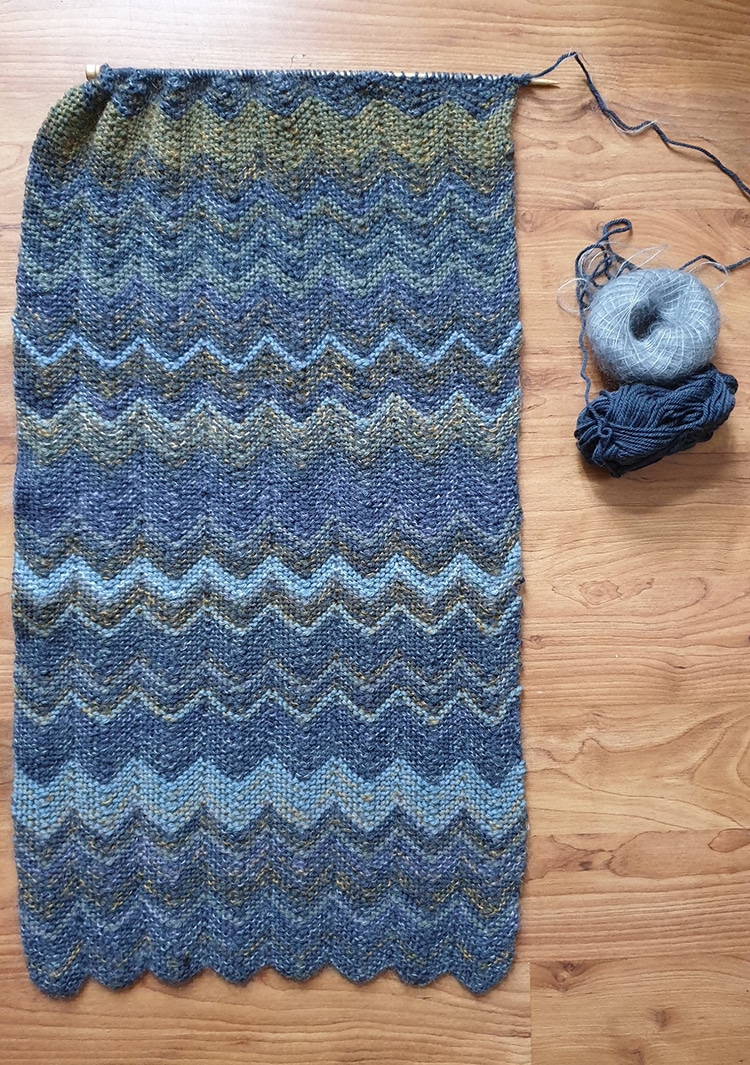
The temperature scarf at the end of March.
You began your temperature scarf this past January as a way to remain conscious of the changing climate as you experience it in the UK. Why did you choose to use yarn as a medium to record the climate?
I’ve knitted for many years and had seen similar projects online with people knitting temperature, precipitation, or the color of the sky each day into a blanket in straight rows. I decided to do something a little different—to knit the daily temperature and the day’s weather together to try and capture more of what it is to experience climate as a whole. I also wanted to make something both meaningful and beautiful and so decided on a zig-zag chevron stitch pattern and subtle, shifting colors to give the piece a sense of movement through the year.
I love the quiet repetition and humility of knitting, each stitch considered and equal. In many art forms, the artist speaks through a piece of work, but yarn felt like the perfect medium to allow myself to step back and to allow the changing temperatures and weather patterns to speak for themselves. I love too how knitting is a kind of coding—knits and purls instead of ones and zeros. It lends itself gorgeously to data collection.
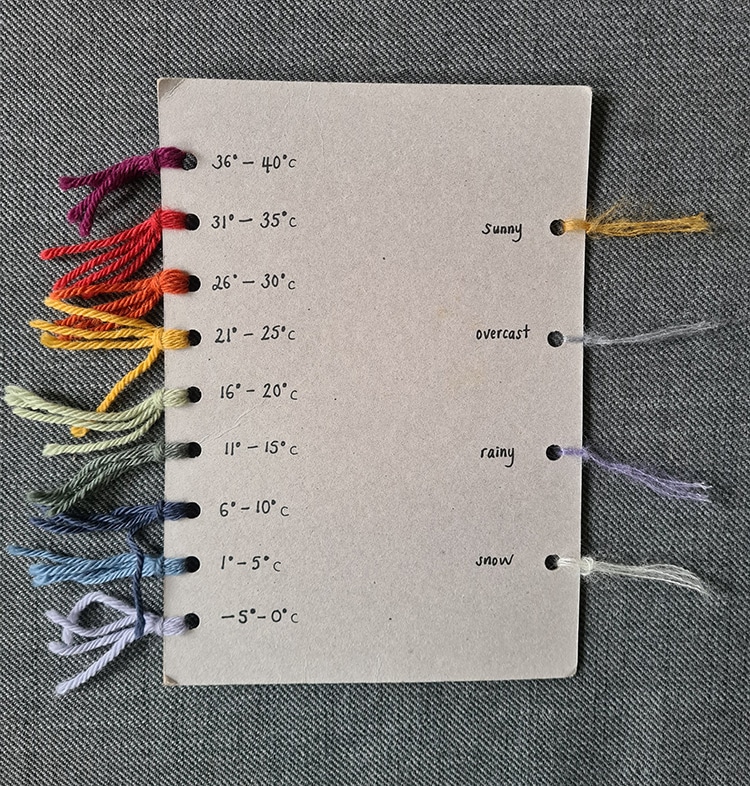
George's yarn color code for daily weather conditions.
In your monthly scarf updates on Twitter, some blocks of uniform color appear while other lines are anomalies. Has the weather of any particular month surprised you?
Very much so. Here in the UK, we’ve had a year of quite extreme weather—intense rain and storms, an early heatwave, with record temperatures and dry spells. I expected colder weather at the beginning of the year (and had my cool colors ready) but was surprised to getting warm very early on. February brought endless downpours, deep floods and fierce storms, but April and May—usually our months of spring showers—were entirely dry with hot, sunny days, and I had to fight to keep my spring plants watered and alive. Sudden flashes of extreme heat through the summer left everything crisp and curling. The strangest month was August—I saw days of 35°C [95°F] fall to barely 12°C [54°F] in just a few days. It has made me quite dizzy at times, just how unpredictable it has been.

The April weather in the UK reflected in the scarf.
Based on your experience, why is it important to remain conscious of the environment?
I am deeply aware that our planet is in trouble. Although my year’s worth of data isn’t indicative of anything in itself, it coincides with a wider consensus that climate change is having a profound affect on the world’s temperatures and weather patterns and is linked to extreme and unusual weather events and wildlife decline. And yet, daily human life is not easy, often swallowing all our attention and thought. It is frighteningly easy to switch off, forget, tune-out or dismiss environmental news. When we ignore something, we lose our relationship with that thing. We numb our sensitivity to its moods and changes, our sensual experience of being with it. We also lose sight of how deeply connected we are to everything around us. The earth is my home and I am joined to everything in it. I don’t ever want to forget that. I want to stay awake to what’s going on around me and to think of more than my own life.

George's temperature scarf at the end of May.
Creating daily is an impressive feat of routine. Has the daily knitting of a year-long project affected how you experience (or gauge) the passing of time?
I am very much a creature of routine and find great comfort in repetition and disciplined action, so daily knitting slotted in beautifully with other habits I have as an author and artist. I love the way conscious actions repeated every day became a sort of slow, rhythmic dance. Writing, moving, knitting, making art, meditating, caring for my environment. Each of my hours has a different focus and I love that. It shifts my attention through time and keeps me connected to the turn of the day. It helps my life to feel directed, chosen. Without these anchors, I find the days become a blur of vague thought and unfocused, reactive behaviors and I start to feel more like passive pinball in some giant machine rather than someone with agency, choosing her way.

A close-up view of the month of June.
You have described creating the scarf as a work of commitment, a relationship. Could you elaborate further on what it means to truly engage with a project?
Even before COVID, I was mostly housebound and spent huge quantities of time alone. I’ve been disabled since I was a child, I’m a single mum, and my partner lives and works abroad, so solitude has long been a big part of my daily experience. That’s been really hard at times, but I’ve never wanted to overlook all the opportunities for relationship and companionship I have right here in the small rhythms of my day.
As with many other aspects of my work and creativity, the scarf was a way of saying to my environment, “I see you! I’m here with you.” To listen and look and see what I can learn. The best relationships are the ones where we’re able to get out of the way a little, to let the other person or situation be seen and appreciated for who and what they are, without us layering on our own biases, expectations and judgements. That’s what I wanted to do here, too. To make myself fully available to the day, to truly pay attention to it, and then to respond in a way that honored that day’s reality. I guess it’s about love, really, don’t you think?

George's July update showing variable temperatures.
As a writer, photographer, painter, and knitter, you create in many mediums. Do your creative practices intertwine? Do you find yourself approaching themes—such as the environment—across multiple mediums?
The big theme that runs through everything I do is attention; but yes, this expresses itself in many different ways. Alongside knitting the scarf, I’ve been working on a novel that deals with the difficulty and pain of staying awake to what’s really going on around you and inside you, and nature plays a big role in that. My art practice has focused on drawing moments around me and seeing how that changes my relationship with that moment. My biggest interest right now is in how play and playfulness might be a good channel for both learning to pay attention to life as it really is, and in building relationships with the things and environments around us. It’s all connected.
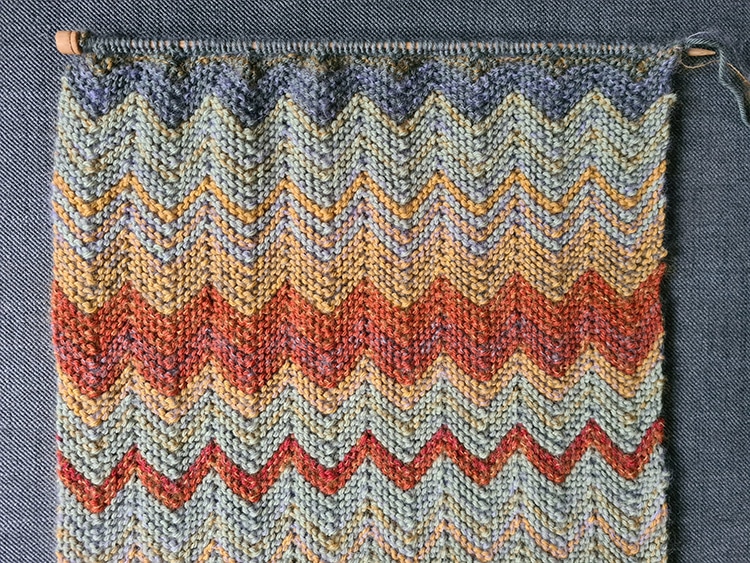
For August, George knitted a wide range of temperatures which she tweeted was “both relentless & comforting.”
You have a forthcoming memoir entitled A Still Life. You tell your story of living a meaningful, rewarding, quiet life. What would you like our readers to know most about the book?
That it’s beautiful. That I think it will touch them and make them look up at the world around them with new eyes. It is deeply personal, tender, and full of love. If you’re feeling lost, lonely, burnt-out, too slow, too tired, too jaded, then I think this book could be a good friend to you. I hope it will make you feel better about being in your body and your life and help you to know that you matter.
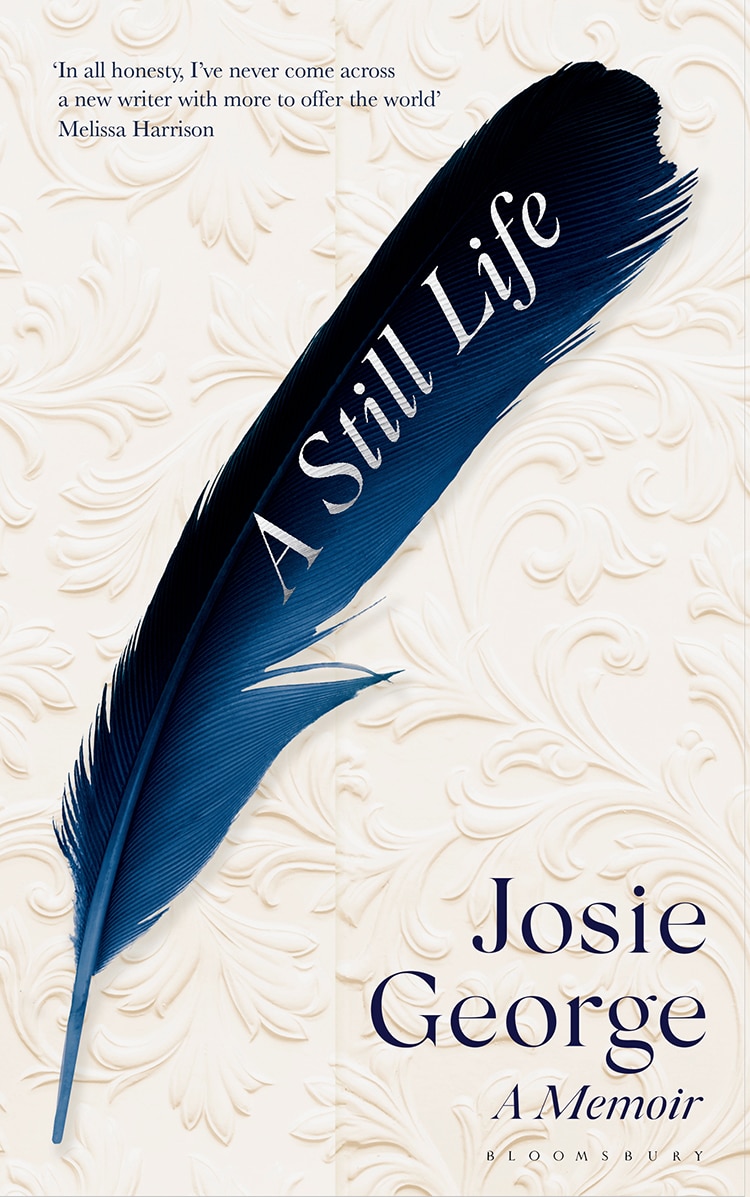
“A Still Life” by Josie George, published by Bloomsbury and due out on February 18, 2021.
What do you intend to do with the temperature scarf when it's complete? Do you plan to make the scarf an annual project?
I haven’t quite decided yet! If someone wanted to exhibit it, I think that would be lovely thing, but equally I’d quite like the chance to continue the project and see what happens. I have wondered whether to do the same thing next year and attach the strips side by side, to see the contrast of the years held together. I will certainly do something next year—it’s too big a part of my day now to imagine life without it.
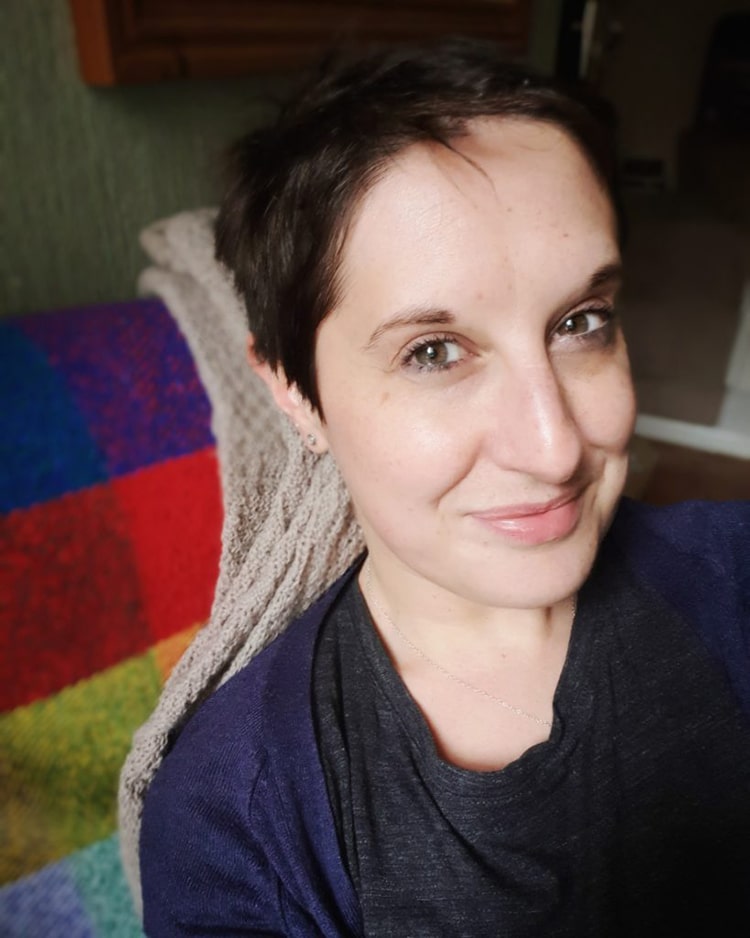
Author and artist Josie George.
Josie George: Website | Instagram | Twitter | Blog
My Modern Met granted permission to feature photos by Josie George.
Related Articles:
Discover the Magical Immersive World of the Meow Wolf Art Collective [Interview]
People Are Knitting the Weather to Track Climate Changes Throughout the Year
Engineer Hacks Old Knitting Machine to Create Giant Tapestry of the Galaxy
Teacher Missed Her Students So She Knit 23 Adorable Dolls to Represent Each of Them













































































